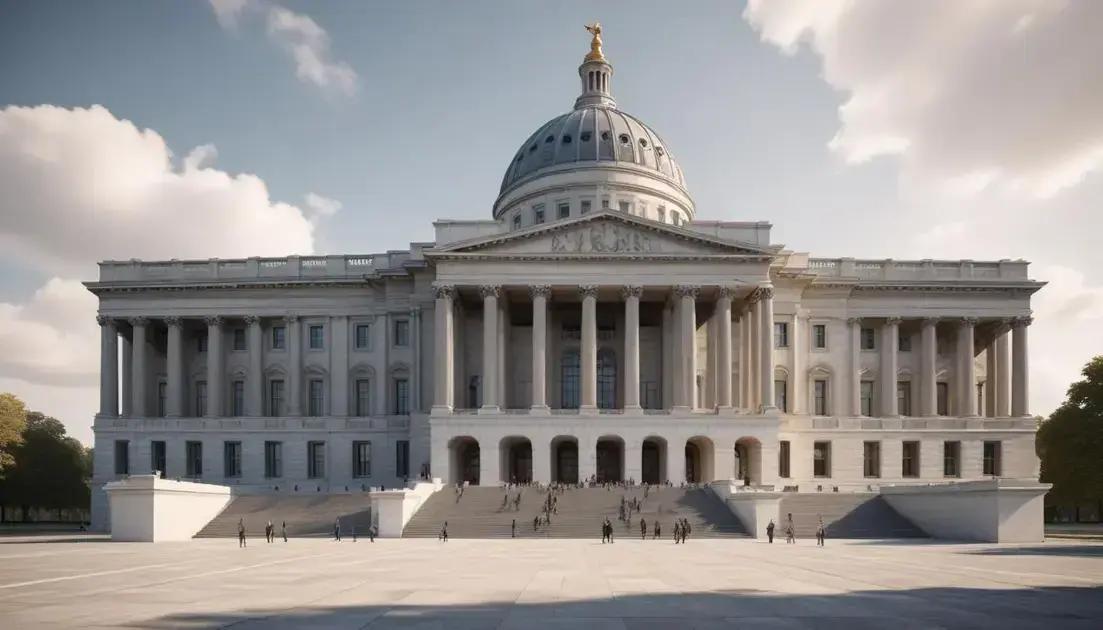
Architecture and Power: Building Ideological Symbols
The future of architecture focuses on trends like sustainability, smart technology, community spaces, and inclusivity. Buildings will become eco-friendly, integrating energy-efficient materials and advanced technologies while promoting social interaction. Adaptive reuse of older structures will preserve history and adapt them for new uses, ensuring accessibility for everyone. This evolution in architectural symbolism reflects our values and priorities as a society, indicating a move towards more responsible and community-centered design.
Architecture has always been a reflection of power, shaping our understanding of history and cultural identity. Ever wondered how a simple structure can symbolize a nation’s might and ambitions? Let’s explore this fascinating connection.
The Intersection of Power and Architecture
The connection between power and architecture is fascinating. Great buildings often reflect the power of a nation. Architecture can inspire feelings of awe and respect. For many countries, this is vital for national identity.
Symbolism in Design
Architects use various styles to express different ideas. For example, strong lines and large spaces can convey strength. Monuments often use imposing designs to demonstrate a nation’s might. A great example is the Washington Monument in the U.S. It stands tall, symbolizing unity and power.
Historical Examples
Throughout history, rulers have built grand structures to leave a lasting impression. Think about the Pyramids of Giza or the Colosseum in Rome. These buildings aren’t just functional; they’re also stories carved in stone, showing what power looked like in their time.
Modern Reflections
Today, skyscrapers often represent economic power. Cities use them to attract business. The Burj Khalifa in Dubai is a prime example. Its height and design symbolize wealth and ambition in a rapidly growing city.
Community and Identity
Architecture can build community. It plays a role in how people view their surroundings. Structures like town halls or libraries can evoke pride and shared identity. They remind us of our roots and the power of collective memory.
Understanding Impact
So, the relationship between architecture and power is significant. It shapes not just buildings but also the way people feel and connect. Each structure tells a story of power, hope, and resilience while reflecting cultural values. Architecture continues to evolve, but its role in expressing power remains timeless.
Historical Monuments as Symbols
Historical monuments serve as powerful symbols of a nation’s identity. They tell stories about the past. Many of these structures are reminders of great events or influential leaders. They connect us to our history and culture.
Significance of Monuments
Monuments often represent values and ideals. For example, the Statue of Liberty symbolizes freedom and hope. Similarly, the Lincoln Memorial represents equality and justice. Each monument has a meaning that resonates with people.
Preserving History
Preserving these monuments is vital. They provide insight into a nation’s journey. Without them, understanding the past becomes harder. Restoration efforts help maintain their beauty and significance for future generations.
Tourism and Economy
Historical monuments also boost tourism. People travel far and wide to see them. This tourism creates jobs and supports local economies. Cities use their monuments to attract visitors and foster cultural pride.
Education and Awareness
Monuments serve educational purposes as well. They teach us about our history and identity. Schools often organize trips to these sites to give students firsthand experiences. This helps them understand the importance of their heritage.
Community Connection
Monuments can bring communities together. They often become sites for gatherings and celebrations. Whether it’s a remembrance event or a national holiday, people connect through shared experiences at these landmarks.
Impact of Political Ideologies on Design
Political ideologies play a key role in shaping architectural design. Different beliefs influence how buildings look and function. For example, authoritarian regimes often build grand, imposing structures to show power.
Expression of Authority
In places where leadership is strong, architecture can reflect control. Huge government buildings symbolize stability and dominance. They aim to inspire reverence and loyalty from the public.
Democratic Influences
Conversely, in democracies, designs often focus on accessibility. Community spaces encourage interaction and inclusivity. Parks and civic centers promote a sense of belonging.
Curves vs. Angles
Even the shapes and lines in buildings can reveal ideology. Sharp angles can suggest strength while curves may evoke warmth. These choices reflect the values leaders want to project.
Historical Context
History shows how regimes have used architecture for their goals. For instance, the Soviet Union’s brutalist style emphasized mass and uniformity. This style mirrored the government’s desire for control and conformity.
Modern Impacts
Today, architecture often merges functionality with ideology. Many architects aim to balance aesthetics with social responsibility. Buildings now need to represent environmental concerns and community needs.
Case Studies of Iconic Structures
Case studies of iconic structures reveal much about architectural achievements. These buildings often embody cultural significance and engineering brilliance. They tell unique stories that connect people to history and identity.
The Eiffel Tower
The Eiffel Tower in Paris is a famous landmark. Built in 1889, it was initially criticized for its design. Today, it represents love and romance. Millions visit it every year, making it a symbol of creativity.
The Great Wall of China
The Great Wall of China is another iconic structure. Stretching over 13,000 miles, it shows the power of ancient engineering. Built to protect against invasions, it remains a testament to China’s rich history.
The Colosseum
Rome’s Colosseum is an architectural marvel. Opened in AD 80, it hosted gladiator games. This remarkable structure symbolizes the grandeur of the Roman Empire. Today, it attracts tourists from all over the world.
The Sydney Opera House
The Sydney Opera House is known for its unique design. Its sails-like roof makes it easily recognizable. Completed in 1973, it is a masterpiece of modern architecture and a cultural icon in Australia.
The Burj Khalifa
The Burj Khalifa in Dubai stands as the tallest building in the world. Completed in 2010, it is an example of innovation and luxury. This structure showcases what can be achieved with modern technology.
Future Trends in Architectural Symbolism
Future trends in architectural symbolism reflect changing values and technologies. As society evolves, so do trends in design and meaning. Buildings will increasingly show sustainability and community engagement.
Sustainability in Design
One major trend is sustainability. Future buildings will focus on eco-friendly materials and energy efficiency. This approach reduces the carbon footprint while creating a positive image for brands.
Smart Technology Integration
Smart technology will play a big role in architecture. Buildings will use sensors to manage energy use and improve comfort. This makes spaces not only modern but also efficient and user-friendly.
Emphasis on Community Spaces
Designers will prioritize community spaces. Parks and gathering areas create connections among people. These spaces will encourage social interactions and foster a sense of belonging.
Adaptive Reuse of Structures
Adaptive reuse is another trend to watch. Old buildings will be repurposed for new uses. This not only preserves history but also reduces the need for new construction.
Inclusive and Accessible Design
Inclusion will be a key theme. Future architecture will focus on designs that are accessible to everyone. This means thinking about people with different needs and abilities.
Conclusion
In conclusion, the future of architecture will hold exciting changes that reflect our growing values. Trends like sustainability, smart technology, and community spaces show how we can build for a better tomorrow. By focusing on these elements, buildings will not only look amazing but also serve their people well.
Preserving history through adaptive reuse helps us connect with our past while creating spaces for new uses. Furthermore, an emphasis on inclusivity ensures everyone feels welcome. Ultimately, the evolution of architectural symbolism will reflect who we are as a society and where we’re headed together.


